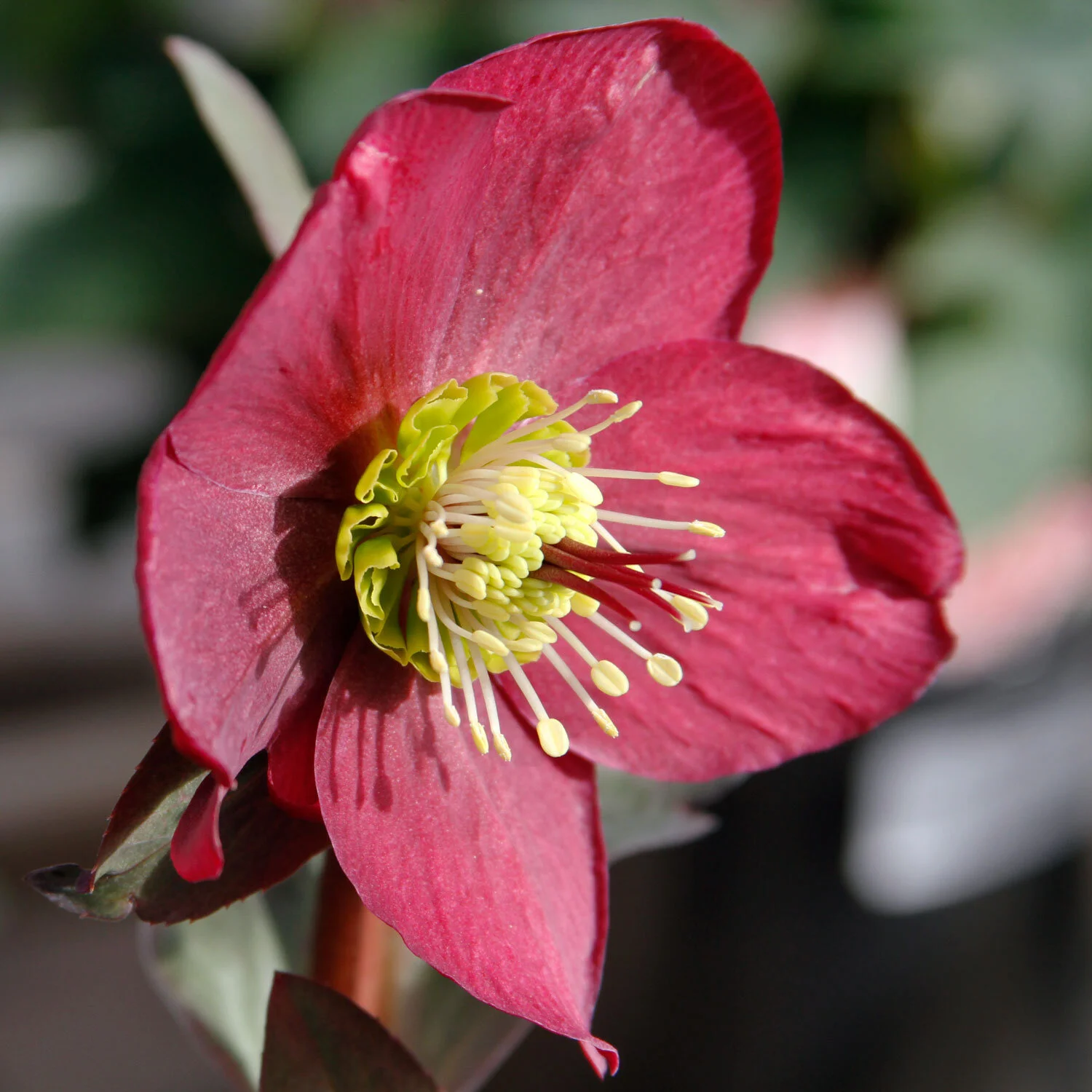After my garden goes to sleep in the fall I look forward to the approach of winter. Tucked among the ferns are some of my favorite winter-blooming perennials: hellebores. I love seeing the evergreen leaves throughout the year and excitedly wait for flowers to emerge during a season when there is little else in bloom.
Hellebore Types
With a wide array of colors and varieties, it is easy and fun to find the perfect hellebore for your garden. To start off the hellebore season, I plant Helleborus niger cultivars since they are the first to bloom, beginning in November and continuing through late winter. These cultivars are called the Christmas Rose for their bloom period during the Christmas season. The pure white flowers stand out on our grey winter days and provide a source of pollen for the few bees braving the weather. The blooms last a long time with the sepals (the botanical term for the colorful petals) often fading to tones of pink.
Helleborus x hybrids are a later blooming group of hellebores, typically February to April, and are known as the Lenten Rose. This group includes some of my favorite flower colors, with blooms ranging from pale peachy-pink to deep burgundy and even unusual hues and patterns. Remember, the best way to be really sure of the flower color is to buy a plant in bloom.
Hellebore Care & Culture
Planting Hellebores
The best time to plant hellebores is from fall to early spring, but avoid planting when the ground is frozen. Not much fun for you or the plant. Plants experience greater stress when planted in hot weather, so be prepared to water thoroughly and often if planted in summer. Since hellebores are native to mountainous regions in Eurasia with limestone bedrock, they prefer alkaline to neutral soil. Adding lime at planting time helps balance our acidic soil pH. In the Pacific Northwest, hellebores are happiest growing in areas with part shade, dappled sun all day, or morning sun. It’s best to avoid full sun locations to prevent burning the leaves.
Getting Hellebores to Bloom
I’ve learned from experience that if a hellebore plant doesn’t flower, there may be a few reasons as to why. Few to no flowers may be caused by lack of light, especially if planted in heavy shade. Another possibility is lack of nutrition, which can be remedied by adding compost to the soil in autumn and fertilizing in late March or early September with an organic bloom booster such as Dr. Earth Rose and Flower Fertilizer. Burying the crown or planting too deep can also hinder flowering. Sometimes, you just need patience for your smaller plants to mature a little before they bloom!
Pruning Hellebores
A common topic of confusion is determining whether your hellebore is caulescent or acaulesent and how to prune it. Caulescent hellebores produce upright stems with leaves on the bottom and multiple flowers at the end. For example, Stinking Hellebores (Helleborus foetidus), Helleborus argutifolius and Helleborus lividus are caulescent. The best time to deadhead caulescent hellebores is after the flowers have finished blooming, by removing the entire stem at the base.
Other hellebores such as Helleborus niger, Helleborus orientalis, and hybrid cultivars are acaulesent, meaning the leaves and flowers are produced on separate stems. Cutting back the leaves on acaulesent hellebores won’t affect the flowers. Choosing to prune out leaves on acaulesent hellebores before flowers emerge is based upon the preference of the gardener. Removing all of the older leaves before flowering provides an unobstructed view of the blossoms. Personally, I prefer to leave the older leaves, not only to add winter interest but also to protect new flower and leaf buds from unexpected cold temperatures. In early spring I remove the older leaves that look a little tattered after the winter.
Watching hellebores blossom through the cold and rainy months certainly helps chase away the winter blues as I begin to plan for the next year ahead!









